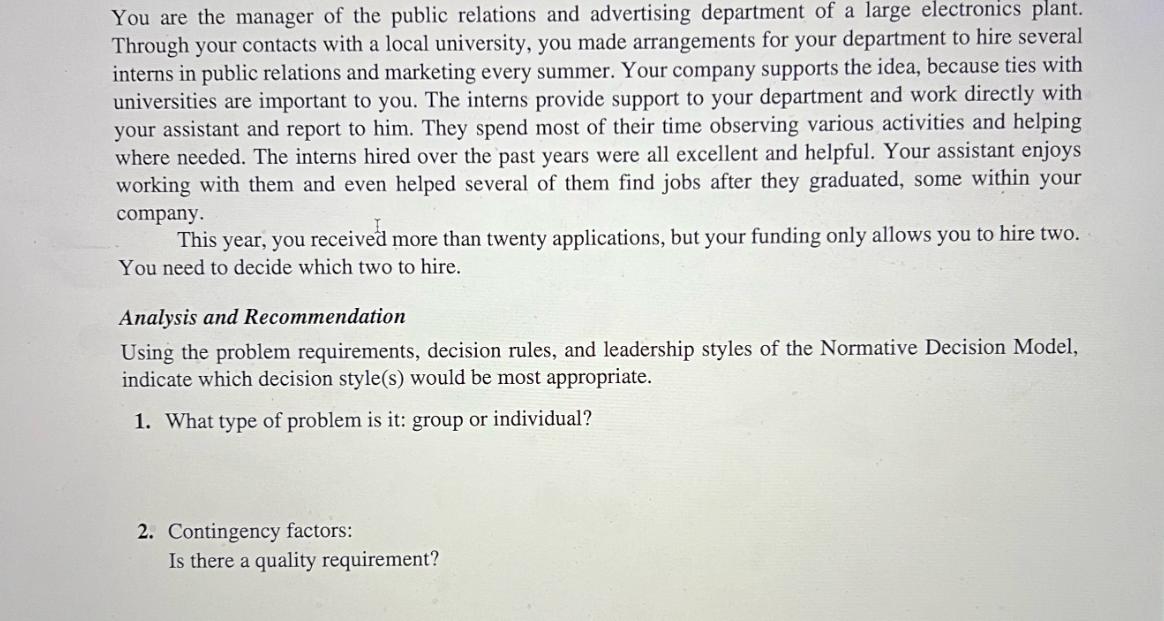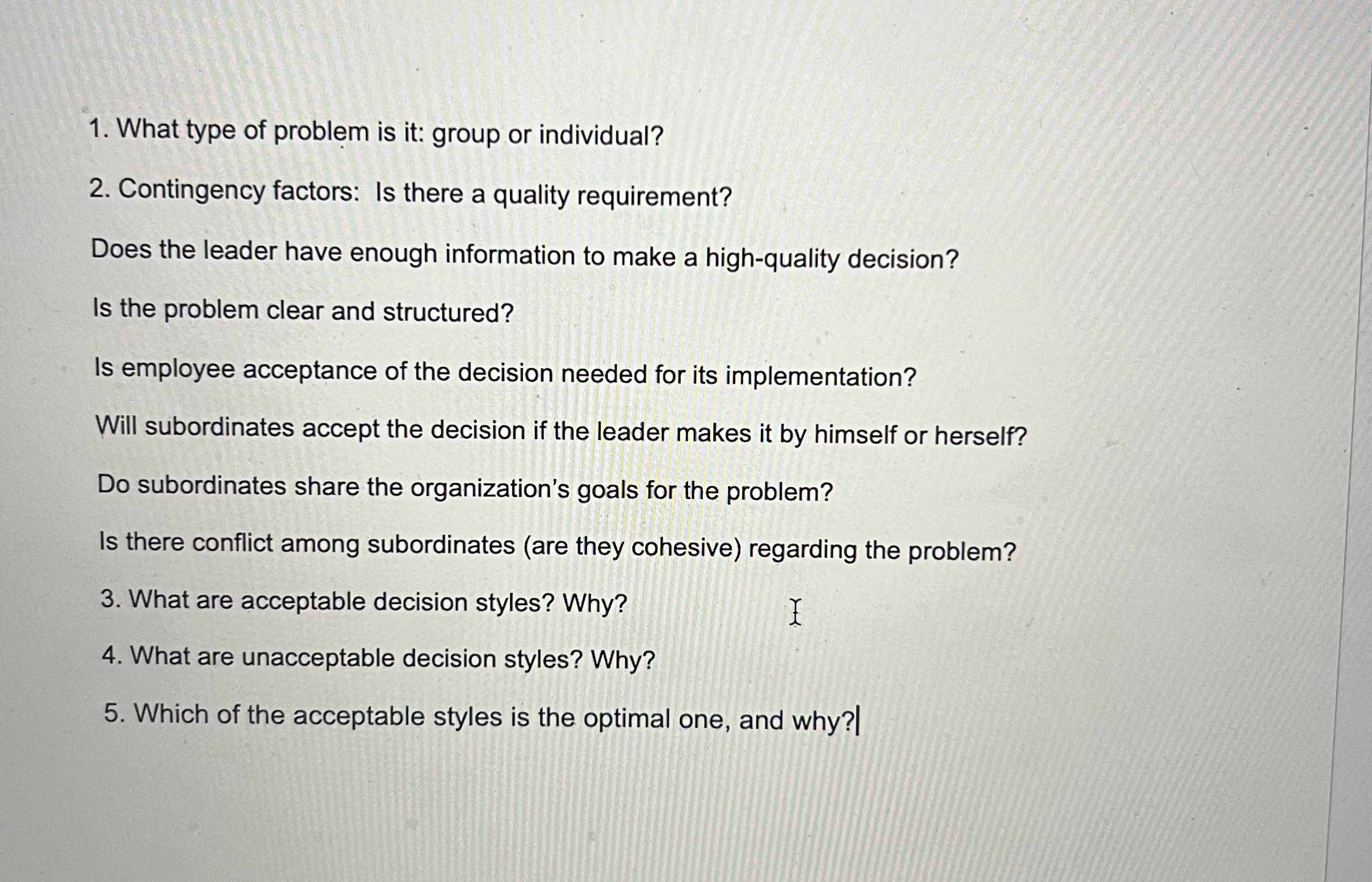Answered step by step
Verified Expert Solution
Question
1 Approved Answer
You are the manager of the public relations and advertising department of a large electronics plant. Through your contacts with a local university, you



You are the manager of the public relations and advertising department of a large electronics plant. Through your contacts with a local university, you made arrangements for your department to hire several interns in public relations and marketing every summer. Your company supports the idea, because ties with universities are important to you. The interns provide support to your department and work directly with your assistant and report to him. They spend most of their time observing various activities and helping where needed. The interns hired over the past years were all excellent and helpful. Your assistant enjoys working with them and even helped several of them find jobs after they graduated, some within your company. This year, you received more than twenty applications, but your funding only allows you to hire two. You need to decide which two to hire. Analysis and Recommendation Using the problem requirements, decision rules, and leadership styles of the Normative Decision Model, indicate which decision style(s) would be most appropriate. 1. What type of problem is it: group or individual? 2. Contingency factors: Is there a quality requirement? Contingency Factors in the Normative Decision Model TABLE 3-4 Contingency Factor Quality requirement (QR) Commitment requirement (CR) Leader information (LI) Structure of the problem (ST) Commitment probability (CP) Goal congruence (GC) Employee conflict (CO) Subordinate information (SI) Question to Ask How important is the quality of the decision? How important is employee commitment to the implementation of the decision? Does the leader have enough information to make a high-quality decision? Is the problem clear and well structured? How likely is employee commitment to the solution if the leader makes the decision alone? Do employees agree with and support organizational goals? Is there conflict among employees over a solution? Do employees have enough information to make a high-quality decision? Sources: V. H. Vroom and A. G. Jago, The New Leadership: Managing Participation in Organizations (Upper Saddle River, NJ: Prentice Hall, 1988); and V. H. Vroom and P. W. Yetton, Leadership and Decision Making (Pittsburgh: University of Pittsburgh Press, 1973). 1. What type of problem is it: group or individual? 2. Contingency factors: Is there a quality requirement? Does the leader have enough information to make a high-quality decision? Is the problem clear and structured? Is employee acceptance of the decision needed for its implementation? Will subordinates accept the decision if the leader makes it by himself or herself? Do subordinates share the organization's goals for the problem? Is there conflict among subordinates (are they cohesive) regarding the problem? 3. What are acceptable decision styles? Why? 4. What are unacceptable decision styles? Why? I 5. Which of the acceptable styles is the optimal one, and why?
Step by Step Solution
There are 3 Steps involved in it
Step: 1

Get Instant Access to Expert-Tailored Solutions
See step-by-step solutions with expert insights and AI powered tools for academic success
Step: 2

Step: 3

Ace Your Homework with AI
Get the answers you need in no time with our AI-driven, step-by-step assistance
Get Started


